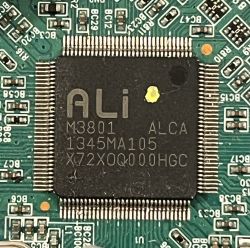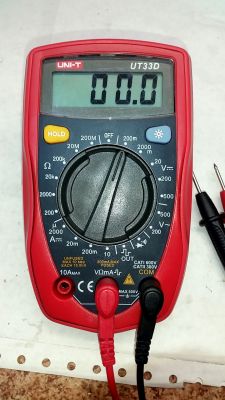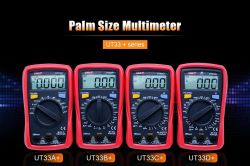Recently, a few people from our forum ordered the UNI-T UT33 multimeter, which I learned from the thread Gadgetomania - gadgets Electrodes for points . As literally a few days earlier I got such a multimeter (version with the letter "B" at the end) from a friend, because he was in arrears, and he himself had no idea how to use such a contraption, I asked in the above-mentioned thread if you want me reviewed it to you. The response was positive so let's begin.
At the beginning, a curiosity about the price. Well, brothers from China, you can buy such a multimeter for $ 14.99, which today translates into almost fifty-seven Polish zlotys

While on Allegro, you can buy it for less than 30 zlotys, including shipping.
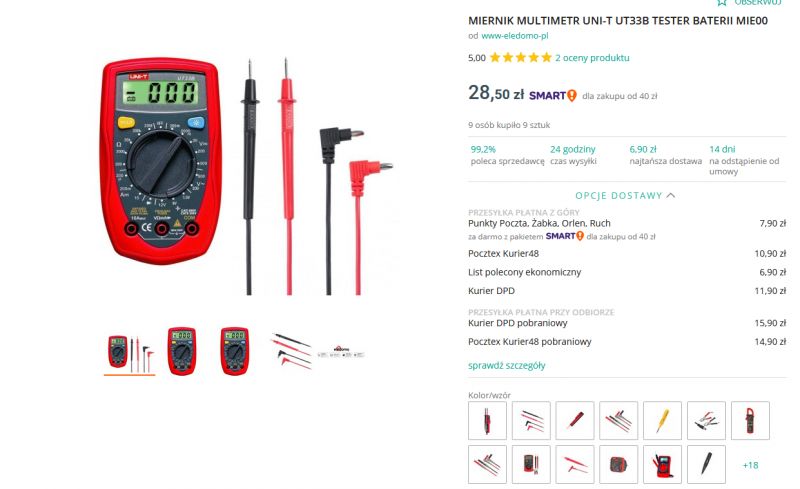
However, if you need several pieces, you can buy five pieces for the same price on Aliexpress You should add shipping costs of $ 8.88, which is thirty-three zlotys with pennies, so it comes out for a total of less than twelve zlotys per item
You should add shipping costs of $ 8.88, which is thirty-three zlotys with pennies, so it comes out for a total of less than twelve zlotys per item  .
.

I received the meter, "bare", but as you can see in the screenshots, the set includes only test leads, which I do not miss.
See how this multimeter looks like. I also did not fail to look inside.
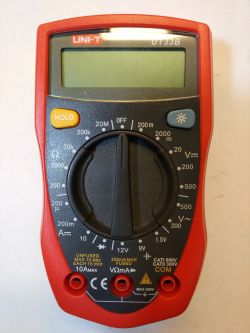
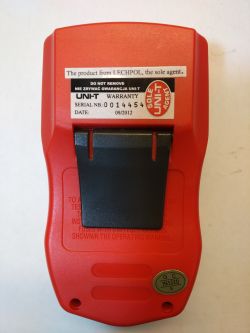
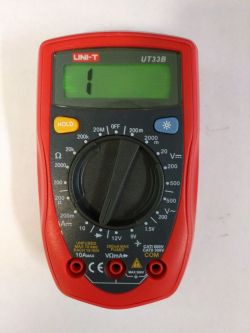
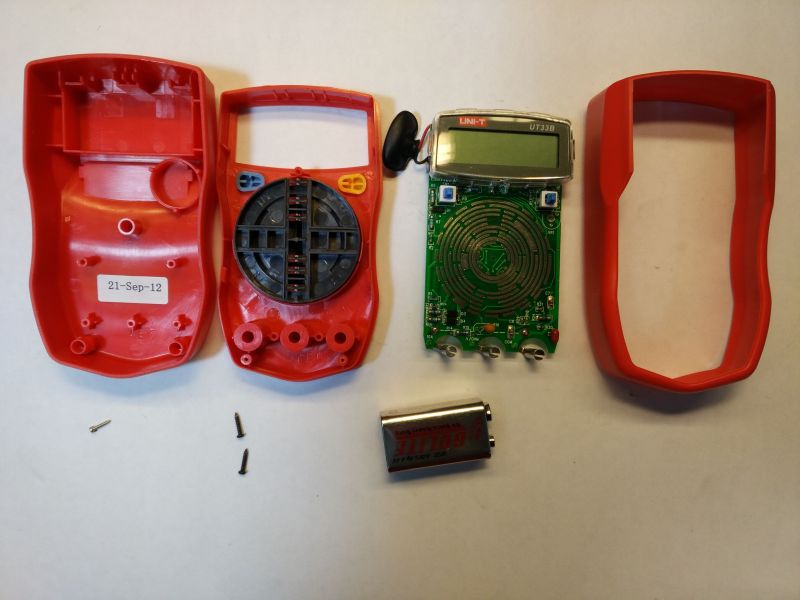
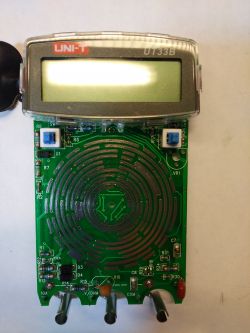
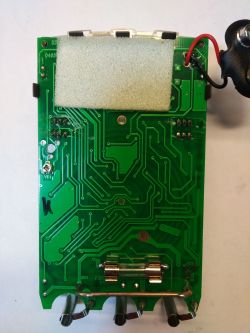
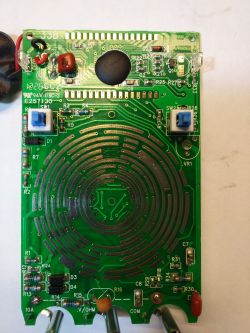
This meter does not have many functions, nor does it have the "most important" one, but it has three redundant ones.
But let's start from the beginning, that is with the technical data and specifications:
Model: UT33B
DC Voltage (V): 200mV, 2000mV, 20V, 200V +- (0.5% + 2) / 500V +- (0.8% + 2)
AC Voltage (V): 200V / 500V +- (1.2% + 10)
DC Current (A): 200uA +- (1% + 2) / 200mA +- (1.2 + 2) / 10A +- (2% + 5)
Resistance (? : 200? +- (0.8% + 5) / 2000?, 20K?, 200K? +- (0.8% + 2) / 20M? +- (1% + 5)
: 200? +- (0.8% + 5) / 2000?, 20K?, 200K? +- (0.8% + 2) / 20M? +- (1% + 5)
Battery test: 1.5V, 9V, 12V
I have no idea why the manufacturer wasted three "fields on the selector" and put these battery tests, not only that the results are the same as in the 20VDC range, but according to the table below, the accuracy is worse than in the 20VDC range.
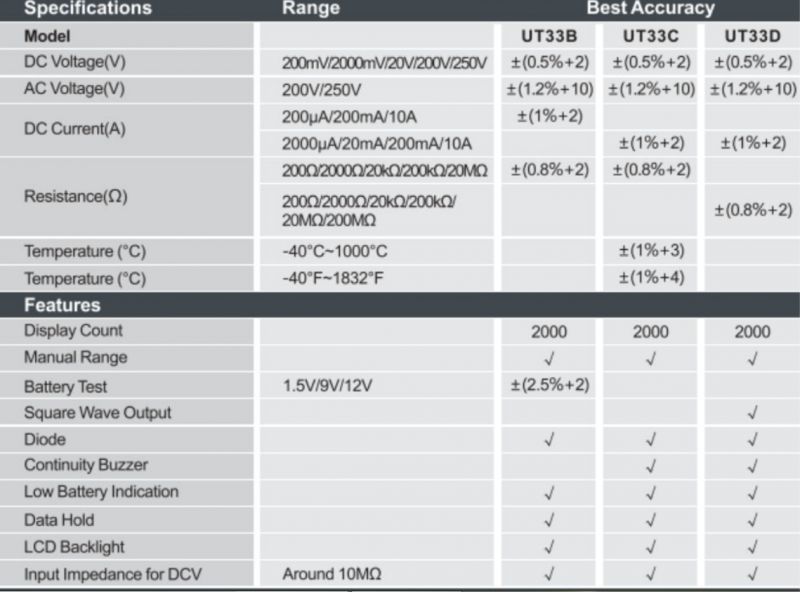
But the table is the table, and the measurement results speak for themselves.
I started my tests by measuring the current. The already known current source (5-20mA) was used as a reference. Well, we have a problem at the beginning. In the mile ampere range, it looked like this.
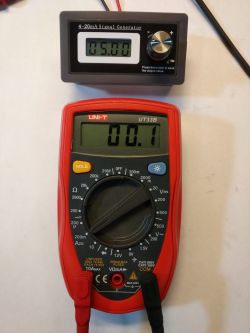
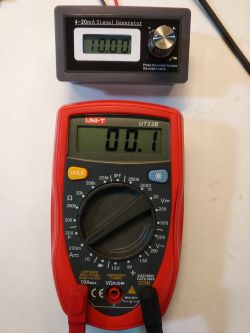
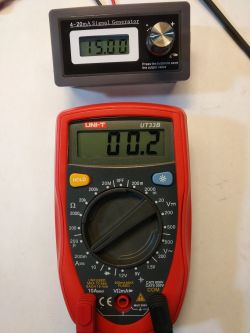
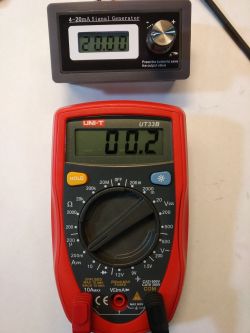
As you can see, failure all along. So let's see if it happened. suitable for something in the 10A range.
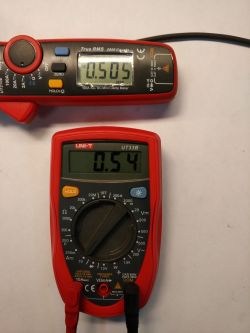
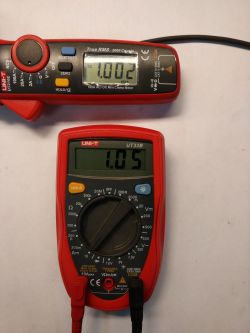
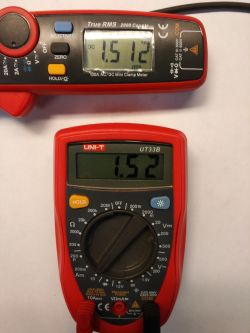
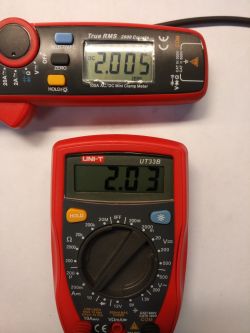
It's much better here. I do not exclude that my copy is damaged (in the range of 200mA), after all, I received it as used, from a person for whom it is a device straight from space.
So let's check how it works in the measurement of DC voltage. The reference voltage you already know will be used for the test.

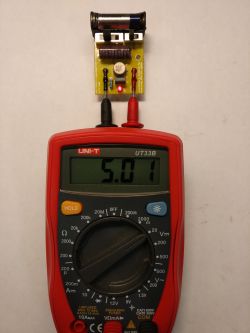
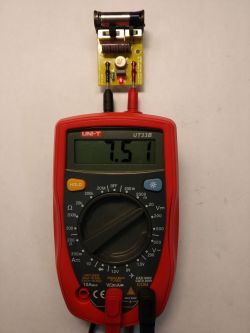
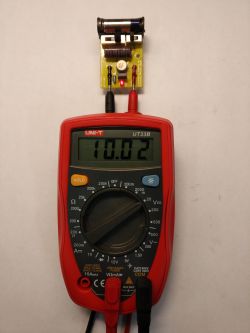
It is not bad here, for a measure of this class, the results are absolutely correct.
Just for formalities, I will throw in a photo of the 230V mains voltage measurement
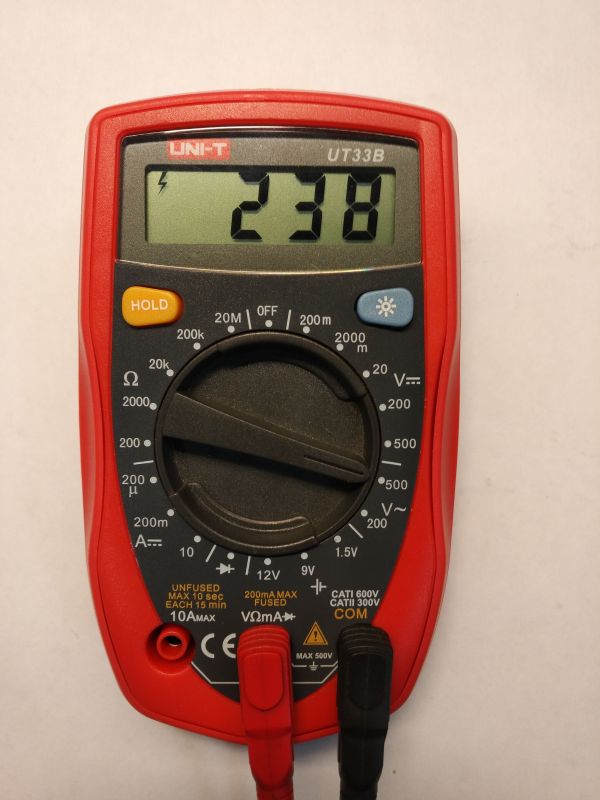
And it's time to move on to the resistance measurement tests. Here, I will use a recently purchased set of nine resistors with a tolerance of 0.1% (zero point one percent).
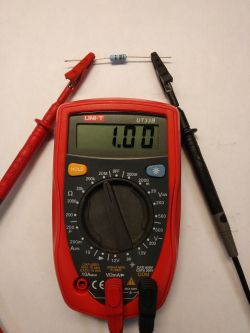
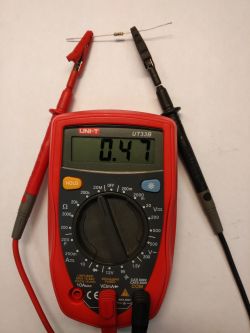
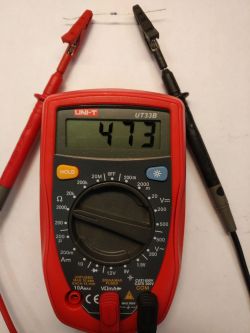
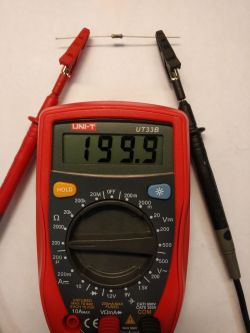
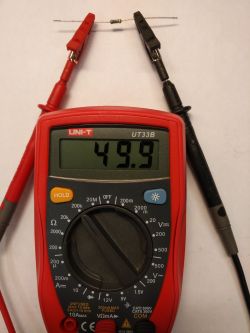
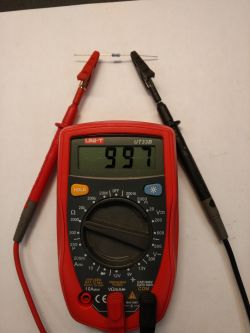
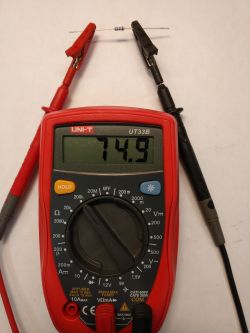
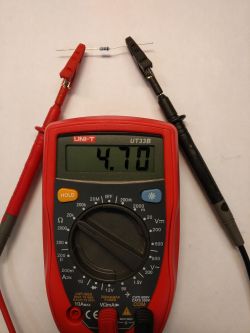
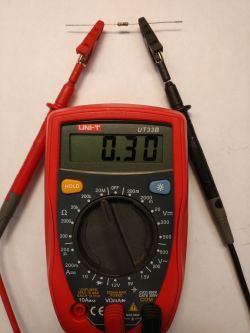
I have no objections here.
Now let's go back to the useless functions in my opinion. I mean 1.5V battery test; 9V and 12V. It is no different from measuring with a multimeter in the 20V range. Due to these stupid "gadgets" we lose as many as three useful fields on the dial. Half the trouble, if it was on the principle "there are all the necessary functions, we will fill the circle". Unfortunately this is not the case. This multimeter does not have the most important function a multimeter can have. HE HAS NO "Beep" (beep, buzzer, buzzer). When I undressed it, I was hoping to find a place for this unfortunate piszczyk and to be able to add it on my own. Unfortunately, I did not find any place where I could connect .
.
After all, you might think that this multimeter has more disadvantages than advantages, but ...
This baby has two advantages. First of all, the most ordinary MECHANICAL backlight switch / switch, so it will not go out in the least expected moment.
Secondly, it has a mechanical HOLD button and thus remembers the value of the last measurement (if, of course, it was turned on before).
All in all, this is one of those multimeters that I wouldn't have had if someone gave it to me. To put it more bluntly, I wouldn't buy that crap . But since I have it, it will definitely come in handy ...
. But since I have it, it will definitely come in handy ...
Best regards.
CMS
EDIT: 02/06/2019, 19:30:
I decided to add here the results of additional tests / measurements that I did on your requests.
I have retested and return my honor. The milliammeter is working properly.
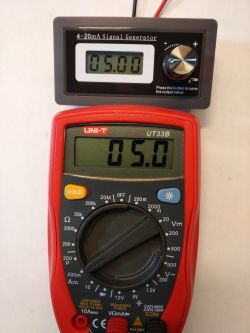
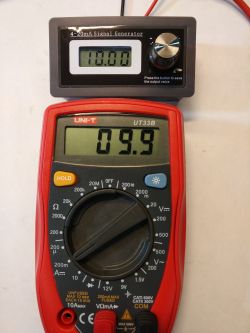
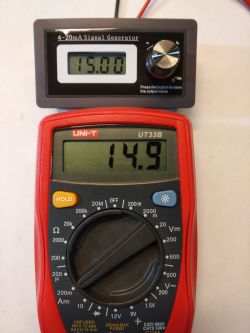
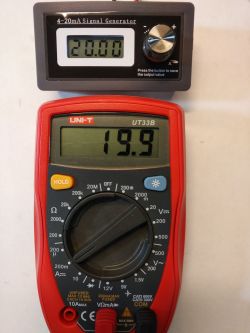
And another test ...
Well, you learn all your life. As I said, I had not dealt with a battery test in a multimeter before and for this the previous measurement, in which I used a fully charged 1.2V battery, was incorrect.
It turns out that, as you thought, the meter introduces a load on the battery test range. I am enclosing new tests on used batteries.
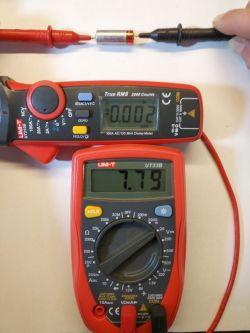
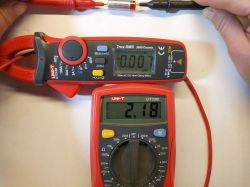
12V battery
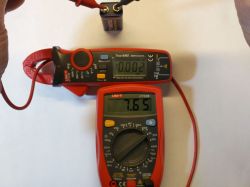
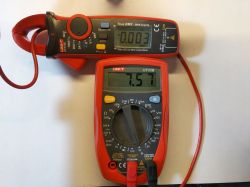
9V battery
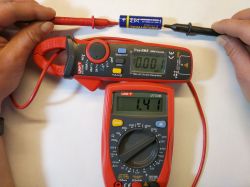
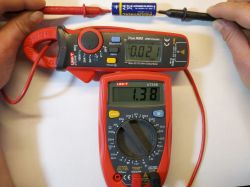
1.5V battery
Well, how he shot the face .
.
As you can see in the photos above, in the case of used batteries, the measurement result in the 20V range is different than in the range dedicated to a specific battery.
However, I still feel that this feature is unnecessary.
At the beginning, a curiosity about the price. Well, brothers from China, you can buy such a multimeter for $ 14.99, which today translates into almost fifty-seven Polish zlotys


While on Allegro, you can buy it for less than 30 zlotys, including shipping.

However, if you need several pieces, you can buy five pieces for the same price on Aliexpress
 You should add shipping costs of $ 8.88, which is thirty-three zlotys with pennies, so it comes out for a total of less than twelve zlotys per item
You should add shipping costs of $ 8.88, which is thirty-three zlotys with pennies, so it comes out for a total of less than twelve zlotys per item 
I received the meter, "bare", but as you can see in the screenshots, the set includes only test leads, which I do not miss.
See how this multimeter looks like. I also did not fail to look inside.







This meter does not have many functions, nor does it have the "most important" one, but it has three redundant ones.
But let's start from the beginning, that is with the technical data and specifications:
Model: UT33B
DC Voltage (V): 200mV, 2000mV, 20V, 200V +- (0.5% + 2) / 500V +- (0.8% + 2)
AC Voltage (V): 200V / 500V +- (1.2% + 10)
DC Current (A): 200uA +- (1% + 2) / 200mA +- (1.2 + 2) / 10A +- (2% + 5)
Resistance (?
Battery test: 1.5V, 9V, 12V
I have no idea why the manufacturer wasted three "fields on the selector" and put these battery tests, not only that the results are the same as in the 20VDC range, but according to the table below, the accuracy is worse than in the 20VDC range.

But the table is the table, and the measurement results speak for themselves.
I started my tests by measuring the current. The already known current source (5-20mA) was used as a reference. Well, we have a problem at the beginning. In the mile ampere range, it looked like this.




As you can see, failure all along. So let's see if it happened. suitable for something in the 10A range.




It's much better here. I do not exclude that my copy is damaged (in the range of 200mA), after all, I received it as used, from a person for whom it is a device straight from space.
So let's check how it works in the measurement of DC voltage. The reference voltage you already know will be used for the test.




It is not bad here, for a measure of this class, the results are absolutely correct.
Just for formalities, I will throw in a photo of the 230V mains voltage measurement

And it's time to move on to the resistance measurement tests. Here, I will use a recently purchased set of nine resistors with a tolerance of 0.1% (zero point one percent).









I have no objections here.
Now let's go back to the useless functions in my opinion. I mean 1.5V battery test; 9V and 12V. It is no different from measuring with a multimeter in the 20V range. Due to these stupid "gadgets" we lose as many as three useful fields on the dial. Half the trouble, if it was on the principle "there are all the necessary functions, we will fill the circle". Unfortunately this is not the case. This multimeter does not have the most important function a multimeter can have. HE HAS NO "Beep" (beep, buzzer, buzzer). When I undressed it, I was hoping to find a place for this unfortunate piszczyk and to be able to add it on my own. Unfortunately, I did not find any place where I could connect
After all, you might think that this multimeter has more disadvantages than advantages, but ...
This baby has two advantages. First of all, the most ordinary MECHANICAL backlight switch / switch, so it will not go out in the least expected moment.
Secondly, it has a mechanical HOLD button and thus remembers the value of the last measurement (if, of course, it was turned on before).
All in all, this is one of those multimeters that I wouldn't have had if someone gave it to me. To put it more bluntly, I wouldn't buy that crap
Best regards.
CMS
EDIT: 02/06/2019, 19:30:
I decided to add here the results of additional tests / measurements that I did on your requests.
I have retested and return my honor. The milliammeter is working properly.




And another test ...
Well, you learn all your life. As I said, I had not dealt with a battery test in a multimeter before and for this the previous measurement, in which I used a fully charged 1.2V battery, was incorrect.
It turns out that, as you thought, the meter introduces a load on the battery test range. I am enclosing new tests on used batteries.


12V battery


9V battery


1.5V battery
tytka wrote:When measuring in the 1.5V range, it is about 21.5mA
Well, how he shot the face
As you can see in the photos above, in the case of used batteries, the measurement result in the 20V range is different than in the range dedicated to a specific battery.
However, I still feel that this feature is unnecessary.
Cool? Ranking DIY



